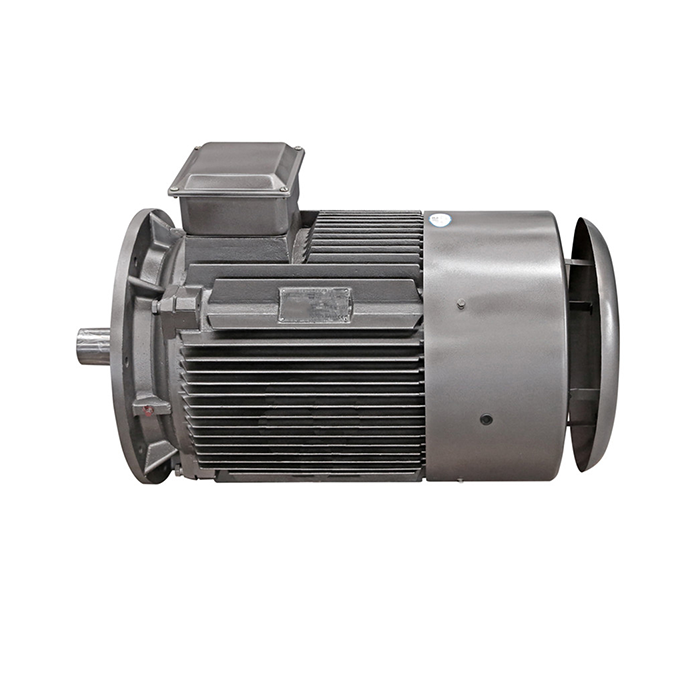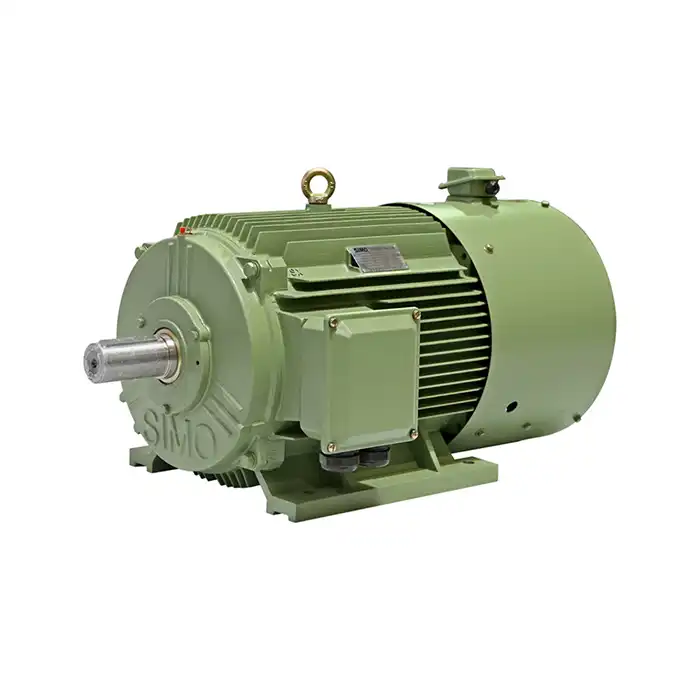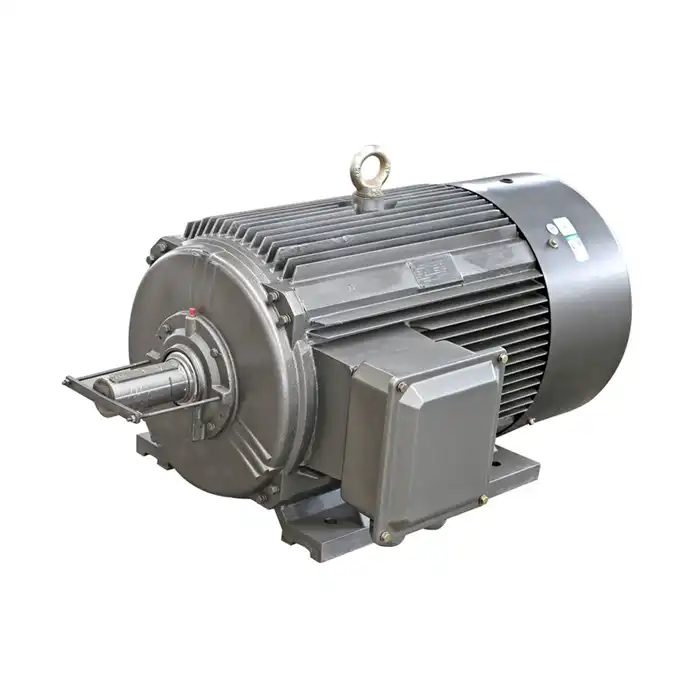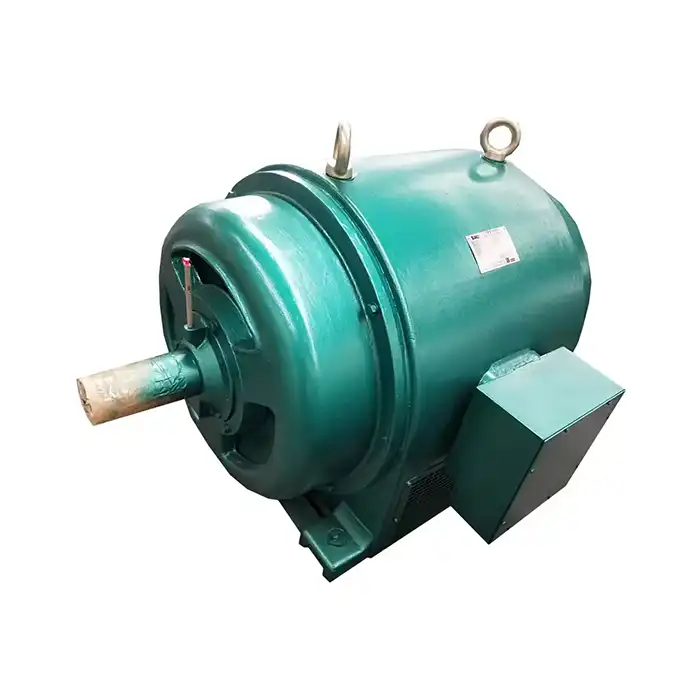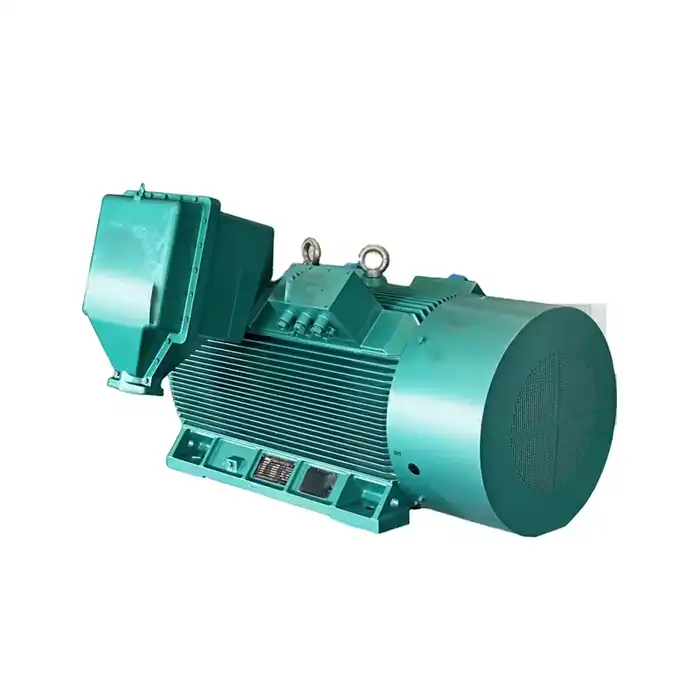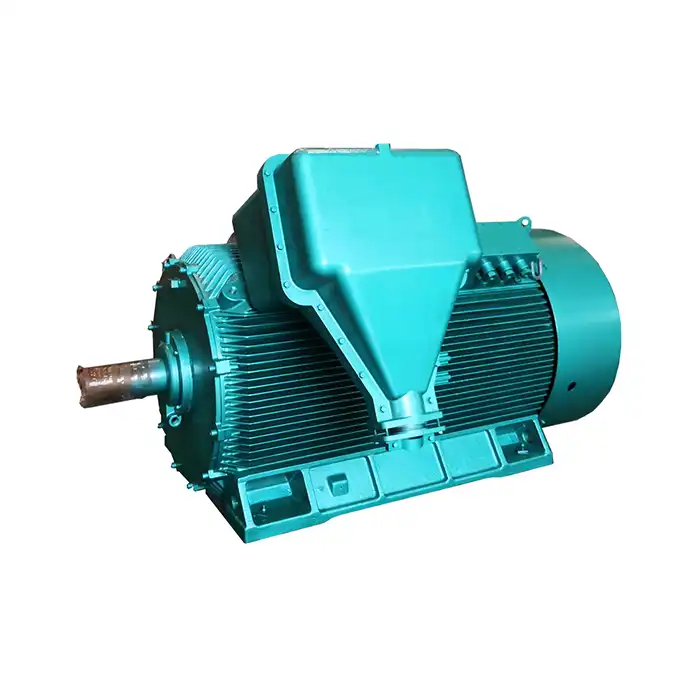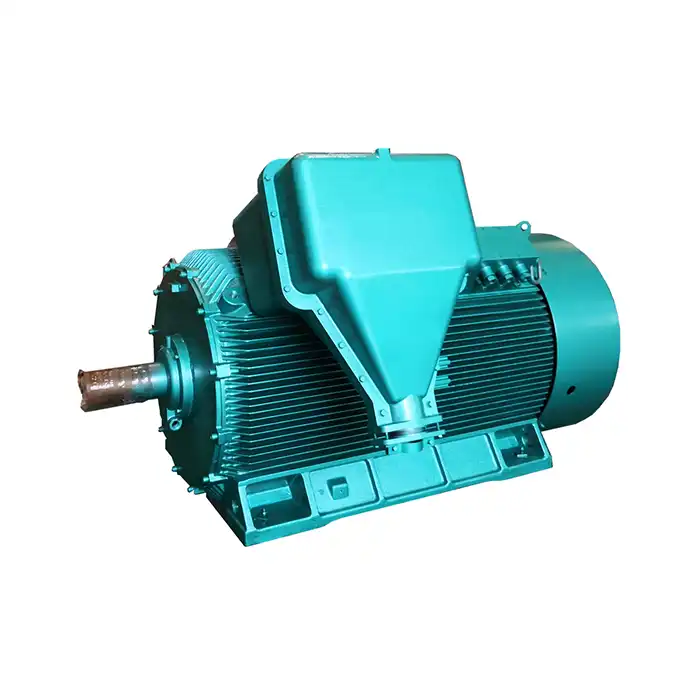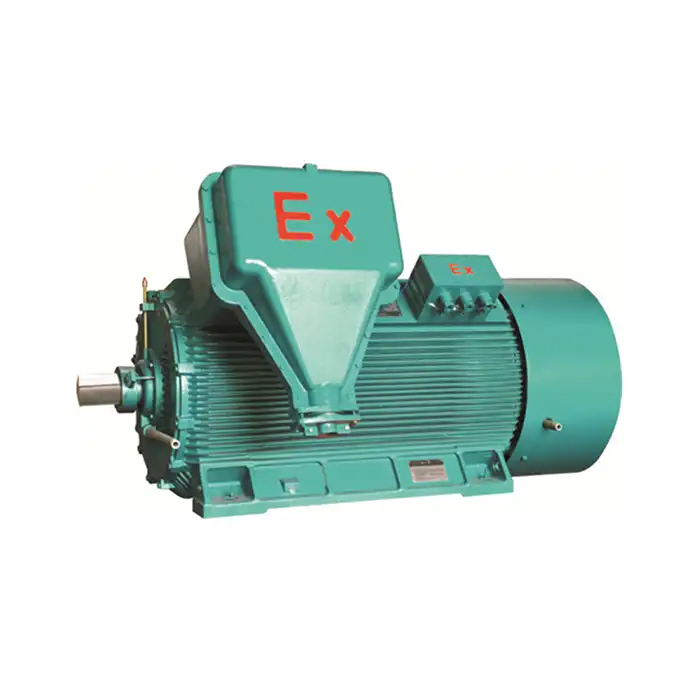Key differences in operating principles
LV Induction Motor: Simple and Robust
The LV induction motor, also known as a squirrel cage motor, operates on a straightforward principle. It consists of a stator with windings and a rotor with conducting bars. When an alternating current flows through the stator windings, it creates a rotating magnetic field. This field induces currents in the rotor bars, causing the rotor to spin.
Slip Ring Motor: Controlled Start and Variable Speed
Slip ring motors, alternatively called wound rotor motors, have a more complex structure. They feature a rotor with windings connected to slip rings and brushes. This design allows for external resistance to be added to the rotor circuit, providing better control over starting torque and speed.
Efficiency and Power Factor
Generally, LV induction motors have higher efficiency and power factor compared to slip ring motors. This is due to their simpler construction and fewer electrical losses. Slip ring motors, while less efficient, offer greater control over speed and torque.
Application-specific advantages and drawbacks
LV Induction Motor: Versatile and Low Maintenance
LV induction motors are widely used in various industries due to their reliability and low maintenance requirements. They are ideal for applications that require constant speed operation, such as:
- Pumps
- Fans
- Compressors
- Conveyors
Advantages:
- Simple construction
- Low maintenance
- High reliability
- Cost-effective
Drawbacks:
- Limited speed control without additional equipment
- Lower starting torque compared to slip ring motors
Slip Ring Motor: High Starting Torque and Speed Control
Slip ring motors excel in applications that require high starting torque and precise speed control, such as:
- Hoists and cranes
- Ball mills
- Elevators
- Mining equipment
Advantages:
- High starting torque
- Smooth acceleration
- Excellent speed control
- Lower starting current
Drawbacks:
- More complex construction
- Higher maintenance due to slip rings and brushes
- Lower efficiency compared to LV induction motors
Comparing Performance in Different Industries
The choice between LV induction motors and slip ring motors often depends on the specific industry and application requirements:
Manufacturing: LV induction motors are commonly used in manufacturing processes that require constant speed operation, such as assembly lines and packaging machinery.
Construction: Slip ring motors are preferred in construction equipment like cranes and hoists due to their high starting torque and speed control capabilities.
HVAC Systems: LV induction motors are typically used in HVAC applications for fans and blowers due to their efficiency and reliability.
Mining: Both motor types find applications in mining. LV induction motors are used for conveyors and pumps, while slip ring motors are used for high-torque applications like crushers and grinding mills.
Cost-efficiency analysis: long-term considerations
Initial Investment
Generally, LV induction motors have a lower initial cost compared to slip ring motors. This is due to their simpler construction and fewer components. However, the initial cost should not be the only factor in your decision-making process.
Operational Costs
When considering long-term costs, several factors come into play:
Energy Consumption: LV induction motors typically have higher efficiency, resulting in lower energy costs over time. Slip ring motors, while less efficient, may provide energy savings in applications requiring frequent starts and stops or variable speed operation.
Maintenance Expenses: LV induction motors have lower maintenance costs due to their robust design and absence of brushes and slip rings. Slip ring motors require regular maintenance of these components, increasing long-term expenses.
Lifespan and Reliability
The lifespan of a motor significantly impacts its long-term cost-efficiency:
LV Induction Motors: These motors are known for their longevity and reliability. With proper maintenance, they can operate for decades, spreading the initial investment over a longer period.
Slip Ring Motors: While also durable, slip ring motors may have a shorter lifespan due to wear on brushes and slip rings. However, their ability to handle high starting torques can reduce stress on other system components, potentially extending the overall system life.
Return on Investment (ROI) Considerations
When calculating ROI, consider:
- Application-specific requirements
- Energy costs in your region
- Maintenance schedules and costs
- Potential downtime and productivity impacts
For many constant-speed applications, LV induction motors often provide a better long-term ROI due to their efficiency and low maintenance needs. However, in applications requiring high starting torque or precise speed control, the benefits of slip ring motors may outweigh their higher costs.
Conclusion
Choosing between an LV induction motor and a slip ring motor depends on your specific application requirements, budget, and long-term operational considerations. LV induction motors offer simplicity, efficiency, and low maintenance, making them ideal for constant speed applications. Slip ring motors provide superior starting torque and speed control, suitable for more demanding variable speed applications.
Consider factors such as initial cost, energy efficiency, maintenance requirements, and specific application needs when making your decision. By carefully evaluating these aspects, you can select the motor that best meets your operational needs and provides the most cost-effective solution in the long run.
FAQ
1. What are the main advantages of LV induction motors?
LV induction motors offer simplicity, reliability, low maintenance, and high efficiency. They are cost-effective and suitable for a wide range of constant speed applications.
2. When should I choose a slip ring motor over an LV induction motor?
Choose a slip ring motor when you need high starting torque, smooth acceleration, or precise speed control. They are ideal for applications like hoists, cranes, and elevators.
3. How do maintenance requirements differ between LV induction and slip ring motors?
LV induction motors require minimal maintenance due to their simple construction. Slip ring motors need more frequent maintenance, particularly for the slip rings and brushes, which wear over time.
Choose XCMOTOR for Your LV Induction Motor Needs
At XCMOTOR, we specialize in manufacturing high-quality LV induction motors designed to meet diverse industrial needs. As a trusted LV induction motor manufacturer, our motors combine reliability, efficiency, and performance to ensure optimal operation in various applications. With our extensive experience and commitment to innovation, we provide tailored solutions that maximize your productivity and minimize operational costs. Trust XCMOTOR to deliver the right motor for your specific requirements.
Contact us today at xcmotors@163.com to discuss your LV induction motor needs and discover how we can enhance your operations.
References
- Smith, J. (2021). "Comparative Analysis of LV Induction and Slip Ring Motors in Industrial Applications." Journal of Electrical Engineering, 45(3), 112-128.
- Johnson, A. & Lee, S. (2020). "Energy Efficiency in Motor Selection: LV Induction vs. Slip Ring Motors." Industrial Energy Management, 18(2), 75-89.
- Brown, R. (2019). "Maintenance Considerations for LV Induction and Slip Ring Motors." Maintenance Engineering Quarterly, 32(4), 201-215.
- Garcia, M. et al. (2022). "Performance Evaluation of LV Induction Motors in Variable Speed Applications." IEEE Transactions on Industrial Electronics, 69(8), 7890-7901.
- Wilson, T. (2018). "Cost-Benefit Analysis of Motor Types in Modern Industrial Settings." Industrial Economics Review, 23(1), 45-60.
- Taylor, E. & Patel, N. (2023). "Advancements in LV Induction Motor Design for Enhanced Efficiency." Power Electronics Technology, 41(5), 132-145.



